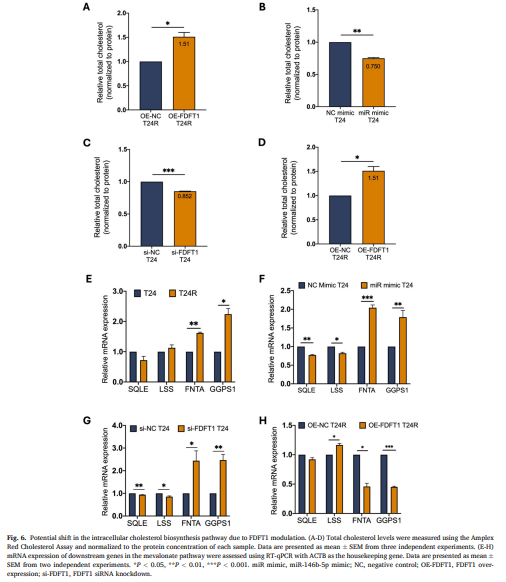The study presents compelling evidence of the miR-146b-5p/FDFT1 axis modulating cisplatin sensitivity in bladder cancer by altering the cholesterol biosynthesis pathway and activating Ras and Rho signaling. However, Figure 6 focuses on gene expression and cholesterol level changes without directly demonstrating how these modifications impact cisplatin resistance mechanistically. Were functional assays, such as Ras and Rho activation studies or cholesterol flux analyses, performed to confirm their involvement in driving resistance? Additionally, the omission of direct protein-level validation for key pathway components limits the ability to draw definitive conclusions about the molecular mechanisms. Could the authors address these gaps to strengthen the study’s impact?



The functional relevance of altered cholesterol levels remains unclear in the context of cisplatin resistance. Were lipid raft integrity or membrane-associated Ras/Rho localization assessed to confirm that cholesterol perturbations directly influence oncogenic signaling? Additionally, while gene expression changes are reported, the study does not explore potential compensatory mechanisms within the mevalonate pathway. Could feedback regulation or alternative metabolic fluxes contribute to maintaining cellular cholesterol homeostasis despite FDFT1 modulation?